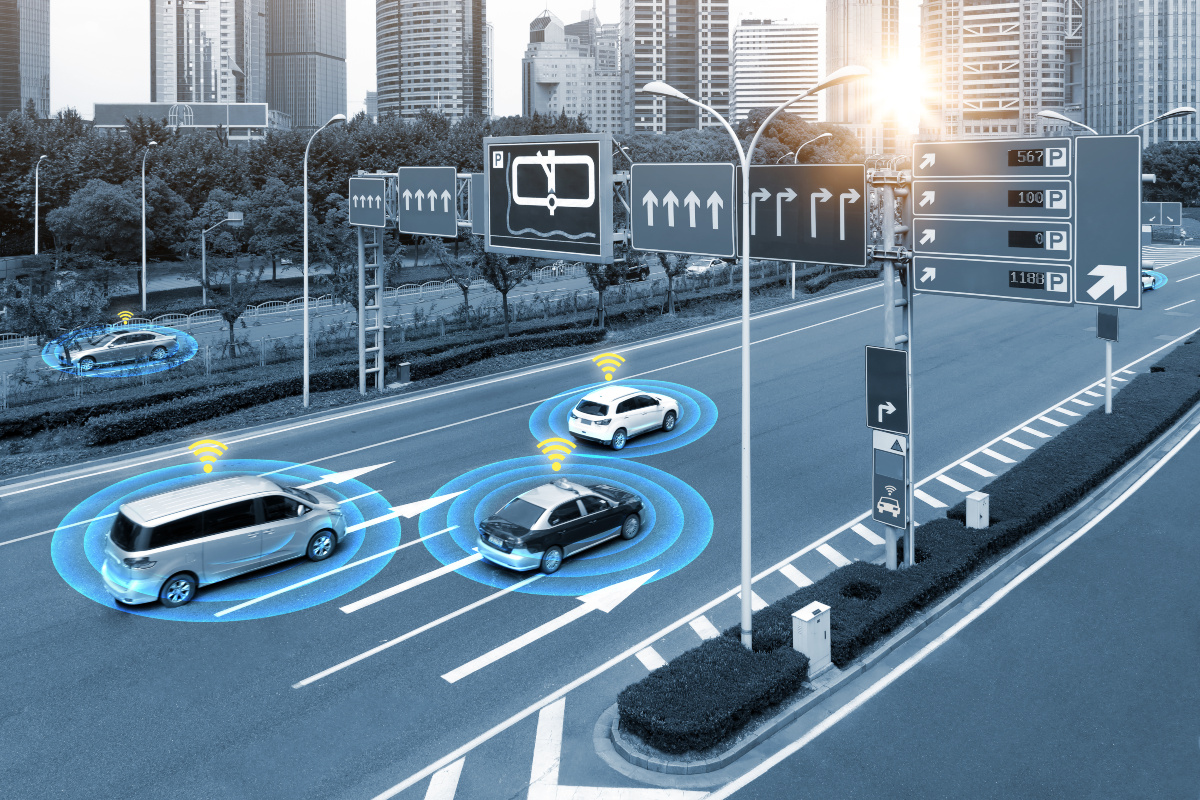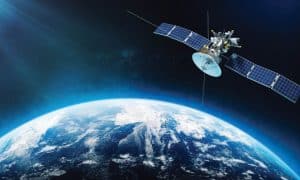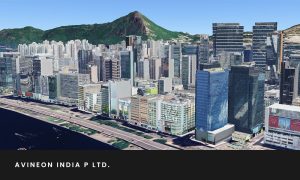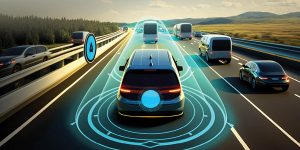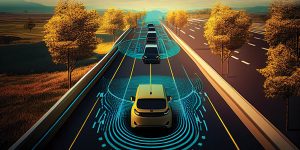Rapid urbanization has spurred cities across the globe to invest in smarter, more advanced infrastructure to provide safe, efficient mobility for their growing populations. In fact, the smart city market is expected to grow approximately 342.5%, from $160 billion in 2021, to $708 billion by 2031.
Considering cities have already poured billions of dollars into existing infrastructure and frameworks such as traffic lights, crosswalks, and bike lanes, they now have to find ways to avoid frequent and costly replacements by updating legacy systems to be adaptable for the future.
Mobility has always been a cornerstone of urban planning, but it’s no surprise that cities were simply not built to accommodate the mobile lives and growing populations of today. When the horse-drawn coach was invented, it influenced the layout and design of cities, from the width of streets to the location of public spaces such as markets.
It also impacted traffic flow, street cleaning, and the overall organization of urban areas. When cars were introduced, cities transformed again with new road networks, designated spaces for parking, the development of traffic management systems, and overall reshaping of environments to accommodate the increasing presence of vehicles.
The legacy systems in place have served their communities well, but much of this infrastructure is limited by the information and technology available at that time. As a result, they have finite intelligence, rarely communicate with other systems, and usually only have a single function or use.
With an estimated 89% of Americans expected to live in urban areas by 2050, it’s imperative to enhance the mobility infrastructure within cities, especially as it relates to traffic flow and congestion. According to the 2022 Global Traffic Scorecard, the typical U.S. driver lost 51 hours to congestion in 2022, about an hour each week, costing them $869 in lost time. This impacts commuting times and accessibility to job opportunities, and in turn, a city’s economic growth and competitiveness. What’s more, an extra 0.04 BMT of greenhouse gasses, about 2 percent of all transportation-related emissions, were emitted in 2019 as a result of congestion.
As urban populations grow, road conditions will only worsen, so it’s critical that cities make the right step in the next phase of this major urban planning evolution. This will hinge on creating and upgrading sustainable alternatives like public modes of transportation and investing in technology that can account for unpredictable and vulnerable road users, and serve multiple purposes.
It’s true that the industry has already begun working on dual-purpose solutions to safeguard residents while improving mobility. Cities have started upgrading analog systems like zebra crosswalks and pedestrian signals by introducing innovative solutions, such as flashing beacons and High-Intensity Activated Crosswalks (HAWK) that use color and flashing light patterns to increase the visibility of pedestrians and better capture drivers’ attention.
However, these still rely on manual activation, powered by hardware, to account for the movement of people. Frankly, even before the pandemic, who wants to be pressing a button that a million hands have touched?
To build on this, a growing number of cities and organizations are adopting open architecture platforms that serve multiple purposes and be updated. They’re using software that can augment existing systems, such as street lamps or traffic lights, to extend these functions and make them smarter.
Software’s longevity allows cities to upgrade their systems in tandem with their development and the evolving needs of their communities. Ultimately, software is a unifying force that can connect infrastructure hardware like signals and sensors with new IoT frameworks, to enable real-time communication and data sharing. Additionally, this empowers other cities and organizations to extract insights from these interconnected systems, allowing them to learn from and enhance their environments to be smarter and safer.
For example, deployments in Chattanooga, TN are using 3D perception software placed on existing infrastructure to better understand traffic flow and the interactions between pedestrians and vehicles to capture insights that are informing greener, safer, and more efficient planning decisions. Other projects, like the new smart parking enforcement in Chicago, use license-plate-reading technology from cameras mounted on poles to automatically issue tickets for parking or standing violations in areas such as bike lanes and commercial loading zones to reduce unsafe driving behavior.
Some solutions are leveraging 3D hardware and applying deep-learning AI to traffic systems that can make decisions on behalf of traffic controllers, such as extending light signals to ensure safe passage for late pedestrian crossings, and using dynamic timing to alleviate traffic queues.
These powerful use cases are only a few examples of what’s possible with emerging technologies. By embracing software-driven solutions, cities can transform their systems into intelligent, future-ready frameworks, without the need to dismantle their current infrastructure. This next era of urban planning will hinge on the coexistence between the old and new systems, and it is through the transformative power of software that we can drive the necessary changes to protect and enhance the quality of life for all residents.
ALSO READ: LiDAR to be at the Forefront of Mobility-as-a-Service: HanBin Lee, Seoul Robotics


